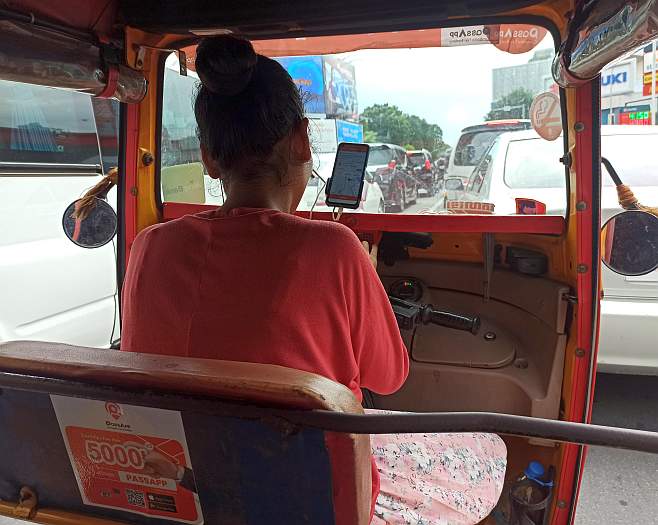
The night time street stalls for food offer a variety of selections. This one sells roast duck.
Charlie Dittmeier's Home Page

The night time street stalls for food offer a variety of selections. This one sells roast duck.

A large percentage of the Cambodian population gets supper from the street, partly because it’s cheap and convenient, and partly because it avoids lighting a charcoal fire in a clay pot which is the way most people cook at home. Here this food stall offers grilled fish.

When you’re hankering for steamed snails in the U.S., you probably have to look around a bit before you find a shop that sells them. Not so in Phnom Penh! And at this shop, you don’t even have to get off your motorcycle to buy them!

Look at the size of these storm drain sewer pipe sections being laid on the street by the Deaf Development Programme! The channel is more than 7 feet tall! It takes a lot of these sections to drain a block of street but they can really remove the water!

A much-publicized initiative of the Cambodian government a couple years ago was to start what they call “one window service,” that is, being able to accomplish one of the many bureaucratic tasks the citizens endure in one trip to one window rather than being shunted from office to office for one or many days.
This woman embraces the same principle in getting her coffee in front of the one window office: she doesn’t even need to get off her motorcycle

These monks making their begging rounds in Phnom Penh may be wearing outfits in a style that hasn’t changed for the last 2,500 years but they have their iced coffee and bubble teas!

It’s 6:05 AM and these women are closing up their shop in a wholesale market. They start selling about 4:00 AM and by 6:00 AM they have supplied restaurants, stores, and smaller markets and it’s time to pack up and go home.

I had an unusual experience today when I rode a tuk-tuk home from a meeting. There was a young woman driving. I always assumed there were some women drivers–in a predominantly man’s job–but this was the first time I’ve seen one. The trip was unusual also because although the most efficient route is shown on the phone app in front of the driver, two times she deliberately went WAY out of her way and did not follow the map. The cost of the trip is set by the app before the trip starts so her going farther than necessary costs her money.

Here is a typical phone shop in Phnom Penh. There are thousands of them, often three or four on one block.

it’s rather difficult getting around the streets near my house these days. Phnom Penh is known for flooding–especially because the government tycoons keep filling in the water catchment areas to sell to their friends–so new sewers are a necessity, but when a busy street–the size of an alley in the U.S.–is torn up, I and the fruit seller and the school girl all have to find an alternative route.